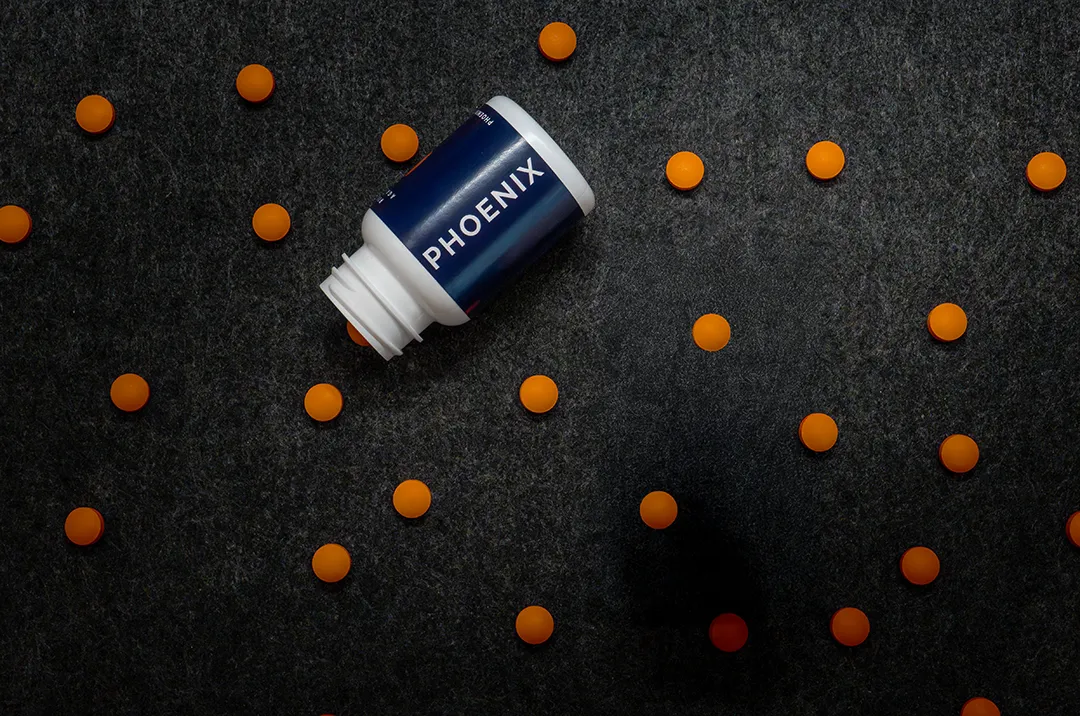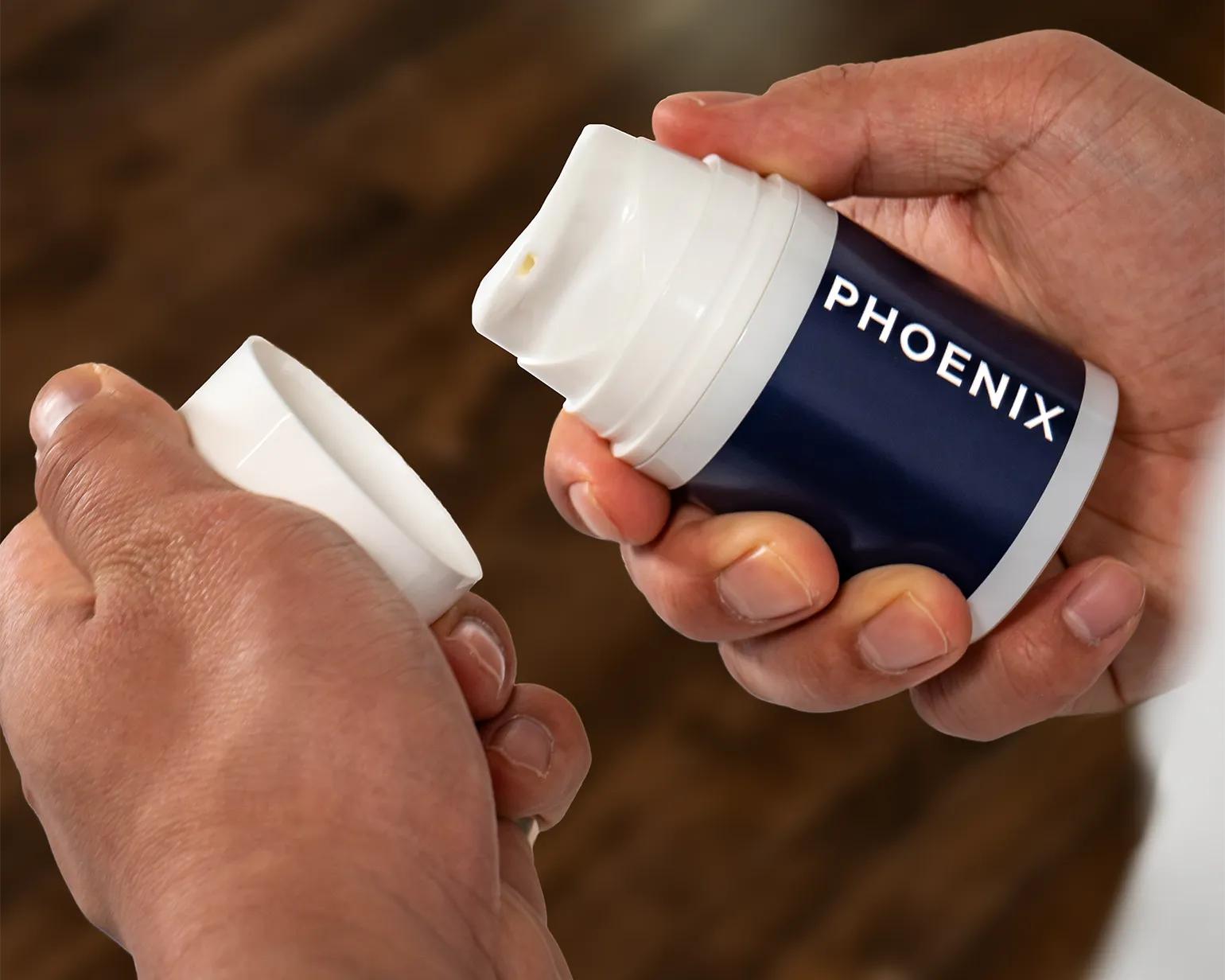What Causes Penis Sores?
- Jump to a Section:
Sores, bumps, lumps, or cysts on the penis are never a good sign. Some of the time, these can be less worrisome occurrences like ingrown hairs, pimples, or razor burn. However, if they are not going away on their own and seem to be increasing in size or number, it is important to see a doctor right away as they could signify an underlying condition.
Almost half of all men will experience some sort of penile lesion at some point in their lives, and the causes can vary greatly. Some common culprits include sexually transmitted infections (STIs), skin allergies or sensitivities, dermatitis, psoriasis, eczema, HPV exposure and genital warts, molluscum contagiosum, and lichen sclerosis. Less common causes can include allergic reactions to latex condoms or spermicidal agents, excessive masturbation or friction during sex, piercings of the penis skin, and certain types of cancer.
If a sore on the penis is accompanied by other symptoms like pain, swelling, redness, or discharge, it is likely that an STI is a cause. Left untreated, these infections can lead to more serious health complications. It is important to get tested and treated for any STIs as soon as possible.
Read on to find out more.
What Could That Bump Be?
There are many different types of penis bumps, and it can be difficult to determine what is causing them without visiting a doctor. Some common culprits are listed below.
Please be aware that no self-diagnosis from an online article can substitute the expertise of a healthcare provider.
Pimples or Acne
Pimples on the penis can be caused by the same things that cause them elsewhere on the body, like bacteria, dead skin cells, oils, and sweat.
Pimples definitely can exist on the groin, shaft, and foreskin. The main difference is that it's more difficult to keep the area clean and dry, so they may be treated with an antiseptic soap or a topical antibiotic ointment.
"Normal" pimples usually go away on their own after a few days. If you have any pain, swelling, or pus discharge, then you may have a more serious infection and should see a doctor.
Pimples typically look like:
- Small, round bumps or lesions with a central whitehead;
- May be red, swollen, and tender to the touch;
- Typically occurring on the face, neck, chest, back, or buttocks; but can also appear on the penis.
Ingrown Hairs
Ingrown hairs can occur anywhere on the body where pubic hair grows, including on and around the penis.
Ingrown hairs are caused when hair curls back or grows sideways into the skin instead of up and out. This can cause inflammation, redness, itching, and sometimes pus drainage. If you shave your groin, ingrown hairs may present themselves if you are not properly exfoliating.
Ingrown hairs typically begin deep under the skin, but may grow large enough to become visible on the surface. They may often be mistaken for pimples or other skin lesions. Keep in mind that ingrown hairs typically occur singly, while pimples are more often seen in clusters.
To treat an ingrown hair, do not pick at it. Picking almost always results in scarring, which means it's much more likely to return again as the area is now damaged and more susceptible to infection, and the skin is stiffer and gives less leeway to new hair growth.
Instead, soak the area in warm water and use a gentle exfoliating scrub or cloth to help dislodge the hair from beneath the skin's surface. You can also try applying a cold compress if it is causing pain or swelling.
If you’re unsure if you have an ingrown hair or not, see your doctor.
Fordyce Spots
Fordyce spots are small, sebaceous glands that can be found on the shaft of the penis. They are typically harmless, and although they may look like pimples, they will not respond to treatment in the same way.
They are more common in men who are uncircumcised and may be mistaken for a sexually transmitted infection.
Fordyce spots typically look like:
- Small, round, yellow, or white bumps that are often mistaken for pimples;
- May occur singly or in clusters;
- Are not painful or itchy;
- Found on the shaft of the penis, but can also be seen on the scrotum, labia, and lips.
Pearly Penile Papules
Pearly penile papules are small bumps that occur around the head (glans) of the penis. They are a normal anatomical feature in up to 20% of men and are not a sign of disease.
Pearly penile papules typically look like:
- Small, dome-shaped bumps that are white or translucent;
- Often occur in rows around the head of the penis;
- Are noncancerous and benign.
There are no treatments, as penile papules are harmless and not a cause for concern.
Herpes
Herpes is a sexually transmitted infection caused by the herpes simplex virus. It can cause blisters or sores on the lips, genitals, or anus. It is a very common virus, and there is no cure.
Most people who have herpes do not know they are infected because they do not have any symptoms. If you think you may have herpes, see a doctor for testing and treatment.
Herpes bumps typically look like:
- Round or oval lesions with a white or yellow center;
- May be clustered together;
- Located on the genitals, buttocks, or anus.
If you have any suspicion that you may have herpes, visit your healthcare provider. Herpes is very common, though many people have little to no symptoms.
There is no cure for Herpes, but your doctor can prescribe you medication that will help stop breakouts.
Cysts
Cysts are small, fluid-filled sacs that can develop on the penis. They may be caused by blocked pores, bacteria, or fungus. Cysts are typically harmless, but they can be bothersome and may need to be treated with antibiotics or antifungal medications.
When they rupture, they can release the fluid inside and cause a painful blister. Cysts usually go away on their own after a few weeks, but if you have any pain or discharge please see your doctor.
Cysts typically look like:
- Smooth, round bumps that are soft to the touch;
- May be white, yellow, or green;
- Located on the head of the penis, foreskin, shaft, or scrotum.
Treatment options for cysts are typically simple and non-invasive. They involve draining the cyst and removing the sac. Some people choose to treat cysts with surgery.
Genital Warts
Genital warts are caused by the human papillomavirus (HPV) and are one of the most common sexually transmitted infections. They can appear as cauliflower-shaped bumps or flat lesions and may be itchy or painful.
In men, genital warts can occur on the penis, scrotum, urethra, anus, or groin. They can be transmitted through sexual contact or skin-to-skin contact with an infected area.
Genital warts typically look like:
- Small bumps or lesions that are cauliflower-like in texture.
- May be white, pink, yellow, or brown;
- Are often itchy or painful.
Treatment typically involves prescription medications or minor surgery.
Lymphocele
Lymphocele is a swelling caused by the accumulation of lymph fluid. It can be painful and may last for several weeks.
Lymphoceles occur when the lymph vessels or nodes are damaged. This could occur after masturbation, surgery, or an injury. Lymphocele is not a sexually transmitted infection (STI).
You can identify a lymphocele by its location, size, and tenderness. Lymphoceles typically form on the side of the penis closest to the scrotum. They can be as small as a pea or grow larger than an orange. Lymph nodes are usually not painful but may become sore if they enlarge.
Treatment for lymphocele usually isn't necessary unless the swelling is causing pain or discomfort. If it does, then draining the fluid may be recommended. This can be done with a needle and syringe or by surgically removing the tissue around the node.
If you are experiencing a lymphocele, you should seek medical attention. Treatment typically includes antibiotics, draining the fluids, and wearing a compression bandage.
Peyronie's Disease
Peyronie's disease is a condition that causes the penis to become curved during an erection. It can be caused by repeated injury to the penis, such as from sexual activity or sports.
The most common symptom of Peyronie's disease is a lump on the shaft of the penis. This lump may be painful and can cause the penis to become curved. Other symptoms include difficulty getting or maintaining an erection (erectile dysfunction) and pain during sex.
Peyronie's disease is a treatable condition, but it does not have a cure. Treatment options include medications, surgery, and penile exercises.
Molluscum Contagiosum
Molluscum contagiosum is a viral infection that causes small, pearl-like bumps to form on the skin. It is most commonly spread through sexual contact, but can also be transmitted by sharing towels or razors.
Molluscum contagiosum typically affects children, but it can occur at any age. The bumps are usually painless and range in size from 1 to 5 millimeters in diameter. They may be itchy or cause discomfort if they are rubbed against the skin.
Molluscum contagiosum is a self-limiting infection, meaning that it will eventually go away on its own. Treatment is not usually necessary, but it can be sped up by using a topical cream or freezing the bumps with liquid nitrogen.
Conclusion
A sore or lesion on the penis can be a cause for concern, but many of them are harmless and will resolve with time. If it is accompanied by other symptoms like pain, swelling, redness, or discharge, however, it is likely that an STI is the cause and needs to be treated immediately. See a doctor for diagnosis and treatment if needed.



